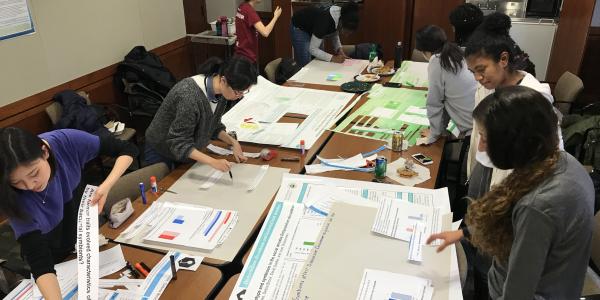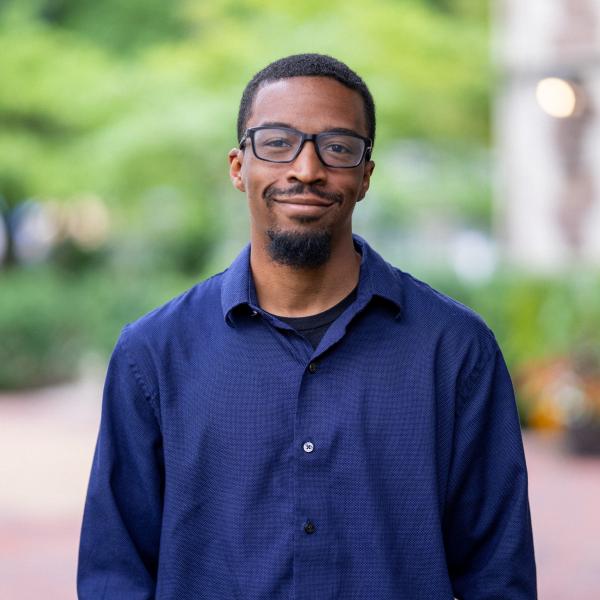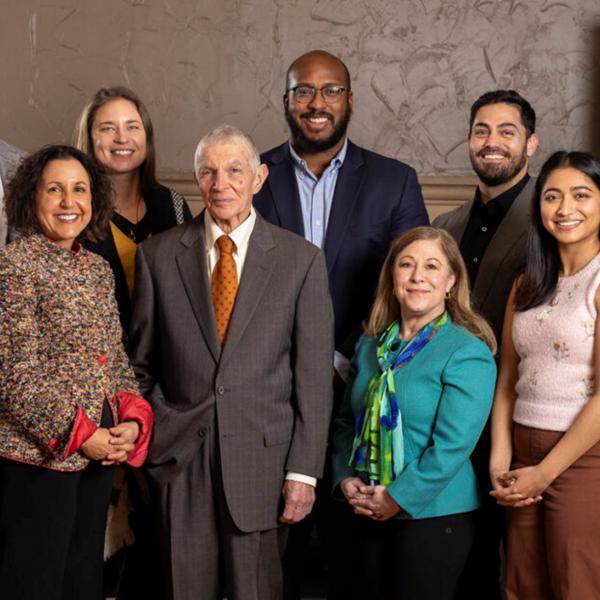While the majority of students presenting at the Undergraduate Research Symposium have conducted independent faculty-mentored research, many still are participating due to the creativity of the Biology Department’s instructors.

Bringing the symposium into the classroom encourages students to improve their presentation skills and helps prepare them for an important aspect of their scientific careers: to effectively communicate their research and engage a wide audience of people.
What does a symposium-based classroom experience look like? It varies with the needs and goals of the course.
Many instructors have their students present the hands-on research they’ve been conducting together. For example, Chris Shaffer and Kathy Hafer teach a First Year, two-semester, authentic research course, Bio 191/192 Phage Hunters. Students join a national experiment organized by Howard Hughes Medical Institute (HHMI), with the goal of isolating and characterizing bacteriophage (viruses that infect bacteria) found in the soil in the St. Louis area. Several of these phages are selected for genome sequencing over winter break and are further analyzed in the spring. Students who successfully isolate and annotate a phage may become co-authors on a scientific paper. Drs. Shaffer and Hafer require students to present their work at the spring Undergraduate Research Symposium. Pre-pandemic, each group of 4-6 students submitted an abstract, designed a poster and presented at the symposium. In recent times, each group submits an abstract and a video talk for the virtual version of the symposium.
Similar to Phage Hunters, Barbara Kunkel’s First Year, two-semester, authentic research course, Bio 1771/1772: Special Topics in Biology: Plant-Microbe Interactions, also requires students to present at the spring symposium. The small class size and laboratory setting of the course is intended to foster development of student-professor mentoring relationships. Each year, students explore a different topic related to interactions between plants and their associated microbes. They put together a poster summarizing their project and results and present it at the Undergraduate Research Symposium in the spring. Not to be deterred by the impact of COVID-19, Dr. Kunkel had her students present virtually to a small group of invited folks for the past two years. This is a great way to give students an authentic, interactive presentation experience while activities are remote.
But first year students aren’t the only ones to benefit from bringing the symposium into the classroom. In Wil Cruz’s, upper level Bio 4522: Laboratory in Protein Analysis course, the Undergraduate Research Symposium is used as a means to demonstrate (1) how scientific material is shared among researchers and (2) to establish connections with other researchers. In this course, students work on an actual research project from one of the labs in the Biology Department. There is a lot of work performed in the labs (6 hours a week) and a lot of data collected.
By having the students present their research at the symposium, the students learn how to organize and present their data in a clear and concise manner. In addition, participation in the symposium requires that the student completely understands all of the aspects of the project (background, hypothesis, protocols, data analysis, and future directions/impact). When the symposium was in-person, students had to present their research and answer spontaneous, unscripted questions. This further reinforces the need for the students to have a complete understanding of the project.
Similar to Bio 4522, Joshua Blodgett’s Bio 3493: Bacterial Bioprospecting and Biotechnology course gives students exposure to hands-on, real-world research. In this case with the focus on industrial microbiology. When the undergraduate Research Symposia were held in person, students presented their work together. In what is a true testament to the value of their hard work, one of the last posters presented still hangs on the limited wall space outside Dr. Blodgett’s lab.
Another value that Dr. Blodgett points out in making the symposia a part of a course is that it gives a chance for students to add that experience to their CV’s or resumes who might not be able to do so otherwise. The course pays for poster printing and the research takes up no more time than they have budgeted for their coursework. This opens up the experience for students who might not be able to afford the time to participate in the more traditional faculty-mentored research experience.
Along those lines, while participation in the symposium isn’t required in April Bednarski’s Bio 4523: Molecular Methods in Enzyme Analysis course, it’s offered because students already have posters printed sharing the research they generate as part of the class. Students perform collaborative research projects in small groups. The course focuses on methods used to investigate enzyme active sites to elucidate binding interactions between small molecules and enzymes. Students design and model modifications to an enzyme active site, then perform those modifications using site-directed mutagenesis.

Finally, while not every class has the option to work on research as part of the curriculum, that hasn’t stopped Joan Strassmann from using the symposium as a foundation for an activity in her Bio 4935: Research Perspectives course. Dr. Strassmann teaches this course geared specifically toward the Undergraduate Research Symposium. She employs a poster activity where students take other people’s posters gathered from meetings, cut them up, and remake them to be more effective. Students are limited to 3 figures or tables and about 300 words. Since it isn’t their own work, students learn to be ruthless with length.
The activity is fun and teaches through doing to limit students’ own work. Strassmann tells them a poster has to do two things: The first is as a back up to a conversation which should take no more than 5 minutes. The second is as a stand-alone device to teach people when the presenter is not there. In the Strassmann Queller Lab, members cycle through on a timer to hear a student practice talking through their poster so that they are better prepared for the real event. No wonder her students’ poster presentations regularly earn top marks at conferences!
As you visit current and future symposia presentations, we hope you enjoy not just the variety of research being presented, but also the variety of ways instructors are using this event to educate the next generation of Biology Graduates.





